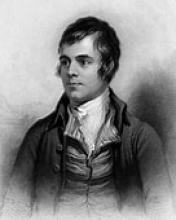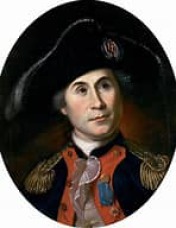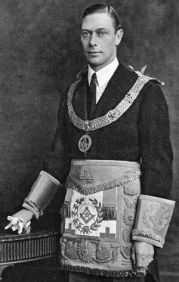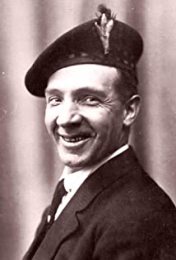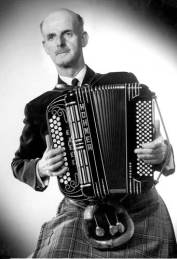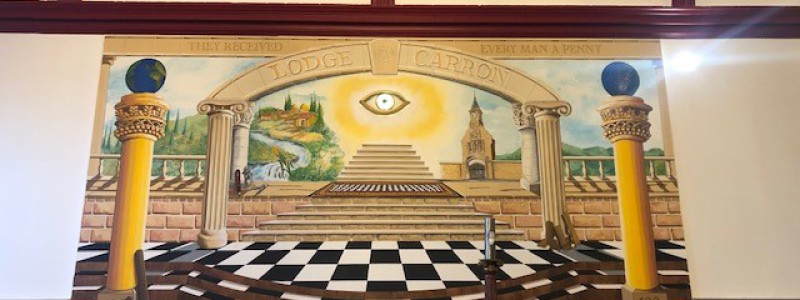
FAMOUS NOTABLE SCOTTISH FREEMASONS
Robert Burns born on 25th January born 1759-died 21st July 1796 in a little 'clay biggin', or mud-walled cottage, near the bridge over the Doon in Ayrshire, he was initiated on 4th July 1781, in St David's Lodge, Tarbolton. He was then only a few months over twenty-one years of age. Shortly after he was made a Mason he became a member, and later was Deputy Master of the revived St. James Lodge, situated at Tarbolton. He held this office for several years. The minutes of three of the Lodge meetings were written, and some thirty were signed, by him. He became interested in the ritual and work of the Lodge soon after he joined it, and at its banquets received the title of `Symposiarch', for he was truly the Ruler of the Feasts. It was Masonic association which gave him the friends who were after-wards of such service to him, and to it was due his introduction to men of intelligence and social position. He became the Ploughman Poet interested in the ritual and work of the Lodge soon after he joined it, and at its banquets received the title of `Symposiarch', for he was truly the Ruler of the Feasts.
*******************************************************************************************************
*******************************************************************************************************
King George VI born 1895-died 1952 Past Grand Master Mason of the house of Windsor (formerly Saxe-Coburg-Gotha). He studied in Trinity College at Cambridge and served in WWI. He was created Duke of York in 1920. A son of George V, he reigned from the time his brother, Edward VIII, abdicated in 1936, until his death in 1952. He was initiated in Naval Lodge No. 2612 in December 1919, the ceremony being conducted by Lord Ampthill. In 1922 he was appointed Senior Grand Warden of the Grand Lodge of England, and in 1924 was made Provincial Grand Master for Middlesex. He was invested and installed by his great uncle, H.R.H. the Duke of Connaught. He held the latter position until he ascended the throne in 1938. As king, he accepted the rank of Past Grand Master of the United Grand Lodge of England, and was ceremonially installed at the Albert Hall in London before an audience of Masons from all parts of the world. In 1935 he accepted and was installed Grand Master Mason of Scotland, and affiliated with the Lodge of Glamis, No. 99, Scotland, where his father-in-law, the Earl of Strathmore, was a Past Master. He created the precedent of the English Sovereign's active participation in Masonic ceremonies, and personally conducted the installation of three Grand Masters (of the United Grand Lodge of England) - the Duke of Kent at Olympia in 1939, the Earl of Harewood in Freemason's Hall in 1943 and the Duke of Devonshire in Albert Hall in 1948. Only his last illness prevented his installing the Earl of Scarbrough in 1951. Toward the end of his reign, he stated that he had always regarded Masonry as one of the strongest influences of his life. He was a Royal Arch Mason and was a First Principal. He was a Past Grand Master of the Mark Lodge and former Ruler of the Mark Province of Middlesex (1931-37). He held the rank of Past Grand Master, and of Knight Commander of the Temple, was a 33rd Degree, and Grand Inspector General in the Ancient and Accepted Rite of Rose Croix. Said he of Masonry: "The world today does require spiritual and moral regeneration. I have no doubt, after many years as a member of our Order, that Freemasonry can play a most important part in this vital need"
*******************************************************************************************************
Sir James "Jimmy" Shand was a Scottish musician was born on January 28th, 1908 in East Wemyss in Fife, Scotland. Later his family moved to Auchtermuchty which currently has a bronze statue of Shand. At a young age Shand started by playing the mouth organ and later moved to the fiddle. At the age of fourteen he was forced to leave school and begin working in the coal mines. When he was 18, in 1926, he was banned from returning to the mines when he played a series of charity concerts for the then striking miners. Things started to change for Shand one day when he and a friend stopped outside a music shop in Dundee. His friend encouraged him to try the accordion which was displayed in the window. He started playing and the owner of store immediately offered him a job as a traveling salesman and debt collector. This gained him access to a van so that he could travel around to play gigs. Leading up to World War II he had tried out for the BBC and was rejected because he kept time by taping his foot. From 1935 to 1940 he made 78s for the Beltona label. This was at a time when a gramophones were a luxury item in the few homes that you found them in. Most of his recordings with Beltona were solo albums, although he did experiment with working small bands. During World War II, Shand was rejected for service due to a digestive problem. Instead he served during the war in the Fire Service. In 1945, Shand made his first broadcast on the BBC with his show "Jimmy Shand and the Band." He made numerous shows and appearances for both television and radio with the BBC. After World War II, Shand became a full time musician. He took on a lifestyle adopted by most rock bands. He traveled from Dundee to Iverness in the Scottish Highlands one night, then the next he was in London for a show and back to Dundee to sleep. Shand semi-retired in 1972, playing out of the way venues for a reduced fee. In the course of his career he had more than 330 compositions. He recorded more tracks than the Beatles and Elvis Presley combined. Since the 1950's the crowd has left Dunfermline Athletic Football Club to the sound of Shand's "The Bluebell Polka. Sir Jimmy Shand passed away on December 23rd, 2000. Shand was a member of Lodge Robert De Bruce No. 304, Ladybank, Fife, Scotland.
*********************************************************************************************************

